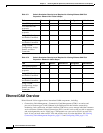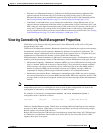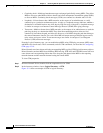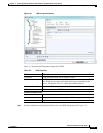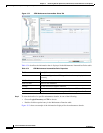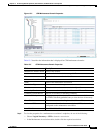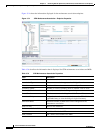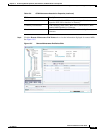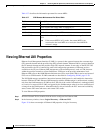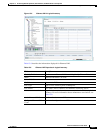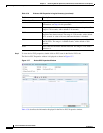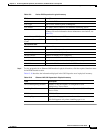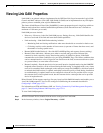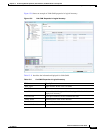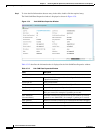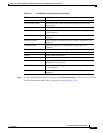
15-10
Cisco Prime Network 4.0 User Guide
OL-29343-01
Chapter 15 Monitoring Ethernet Operations, Administration, and Maintenance Tool Properties
Viewing Ethernet LMI Properties
Table 15-7 describes the information presented for remote MEPs.
Viewing Ethernet LMI Properties
Ethernet Local Management Interface (E-LMI) is a protocol that operates between the customer edge
(CE) network element and the provider edge (PE) network element. Ethernet LMI is a protocol between
the CE network element and the provider edge (PE) network element. It runs only on the PE-CE UNI
link and notifies the CE of connectivity status and configuration parameters of Ethernet services
available on the CE port. Ethernet LMI interoperates with an OAM protocol, such as CFM, that runs
within the provider network to collect OAM status. CFM runs at the provider maintenance level.
Ethernet LMI relies on the OAM Ethernet Infrastructure (EI) to work with CFM for end-to-end status of
EVCs across CFM domains. E-LMI commands are described in Configuring E-LMI, page 15-20.
The IOS OAM manager streamlines interaction between OAM protocols, and handles the interaction
between CFM and E-LMI. Ethernet LMI interaction with the OAM manager is unidirectional, running
only from the OAM manager to E-LMI on the U-PE side of the switch. Information is exchanged either
as a result of a request from E- LMI or triggered by the OAM manager when it receives notification of
a change from the OAM protocol. Information that is relayed includes the EVC name and availability
status, remote UNI name and status, and remote UNI counts.
To view Ethernet LMI properties:
Step 1 In Prime Network Vision, double-click the device configured for Ethernet LMI.
Step 2 In the inventory window, choose Logical Inventory > Ethernet LMI.
Figure 15-6 shows an example of Ethernet LMI properties in logical inventory.
Table 15-7 CFM Remote Maintenance End Points Table
Field Description
MEP ID Remote MEP identifier.
Level Level at which the remote MEP is managed: 0-7.
Status Status of the remote MEP, such as MEP Active.
MAC Address MAC address of the remote MEP.
Local MEP ID Numeric identifier assigned to the local MEP. Values range from 1 to
8191.
Note If the remote MEP is in Up mode, the remote MEP is not
associated to the local MEP. As a result, the Local MEP ID
column is empty.



